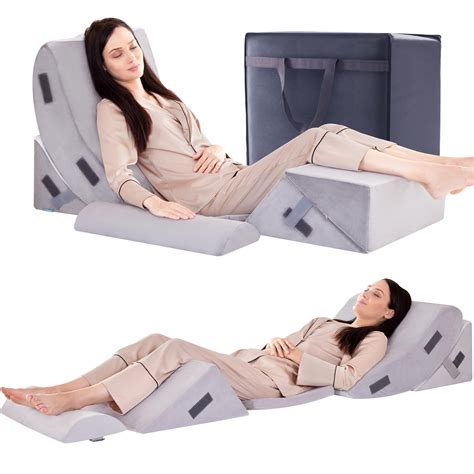Post-Surgery Pain Relief: Your Guide to Sleep and Sitting Comfortably
Post-surgery recovery can be challenging, with pain often hindering your ability to sleep and sit comfortably. This guide offers practical advice and strategies to manage pain and improve your comfort levels during this crucial recovery period. We’ll explore various techniques and considerations to help you navigate this phase effectively.
How to Sleep Comfortably After Surgery
Getting enough rest is vital for healing, but post-surgical pain can make sleep elusive. Here are some tips to maximize your comfort:
-
Optimize your sleeping position: Depending on your surgery, certain positions might be more comfortable than others. Elevate your head and torso with pillows to reduce pressure on your incision site. Side sleeping might be preferable for abdominal surgeries, while back sleeping may be better for others. Experiment to find what works best for you. Consider using a wedge pillow for added support.
-
Use supportive pillows: Pillows are your best friend! Use them to prop yourself up, support your limbs, and cushion pressure points. Body pillows can provide overall support and reduce tossing and turning.
-
Take pain medication as prescribed: Don't hesitate to take your prescribed pain medication as directed by your doctor. Managing pain effectively is crucial for restful sleep.
-
Create a relaxing sleep environment: Dim the lights, play calming music, and ensure your room is cool and quiet. A comfortable temperature and minimizing distractions can significantly improve sleep quality.
-
Practice relaxation techniques: Techniques like deep breathing exercises, meditation, or progressive muscle relaxation can help calm your mind and body, promoting better sleep.
Managing Pain While Sitting
Sitting after surgery can be equally challenging. Here’s how to minimize discomfort:
-
Choose the right chair: Opt for a chair with good back support and armrests. Avoid chairs that are too soft or too firm, as they can exacerbate pain. Consider a recliner for added support.
-
Use supportive cushions: Cushions can significantly improve comfort while sitting. Place them strategically to support your back, hips, and incision site. Gel cushions can help distribute pressure evenly.
-
Take frequent breaks: Avoid prolonged periods of sitting. Get up and move around gently every 30 minutes to an hour to improve circulation and reduce stiffness.
-
Apply ice or heat: Depending on your surgery and the type of pain you are experiencing, ice or heat packs can provide temporary pain relief. Always follow your doctor's recommendations.
-
Maintain good posture: Good posture reduces strain on your back and other muscles, minimizing pain. Sit upright with your feet flat on the floor and your shoulders relaxed.
What Medications Help with Post-Surgical Pain?
Your doctor will prescribe pain medication based on the type of surgery and your individual needs. This might include:
-
Opioids: These are strong pain relievers, but they carry the risk of side effects like constipation and drowsiness. Use them only as prescribed.
-
Non-steroidal anti-inflammatory drugs (NSAIDs): These medications, such as ibuprofen or naproxen, help reduce pain and inflammation.
-
Acetaminophen (Tylenol): This over-the-counter pain reliever is often used in conjunction with other medications.
Always follow your doctor's instructions regarding pain medication. Never exceed the recommended dosage.
How Long Does Post-Surgical Pain Last?
The duration of post-surgical pain varies widely depending on the type and extent of the surgery. Minor procedures may result in only a few days of discomfort, while more extensive surgeries may cause pain for several weeks or even months. Your doctor will provide a more accurate timeframe based on your specific circumstances. Be patient and follow your doctor's advice. Pain management is an ongoing process.
What if My Pain Doesn't Improve?
If your pain persists or worsens despite following your doctor’s instructions, contact your healthcare provider immediately. They can assess your condition and make adjustments to your pain management plan. Don't suffer in silence.
Conclusion
Post-surgical pain relief is a crucial aspect of recovery. By following these tips and working closely with your doctor, you can optimize your comfort and promote faster healing. Remember, prioritizing rest and managing your pain effectively are essential steps towards a successful recovery. This information is for general knowledge and should not replace professional medical advice. Always consult your doctor or surgeon for personalized recommendations.

